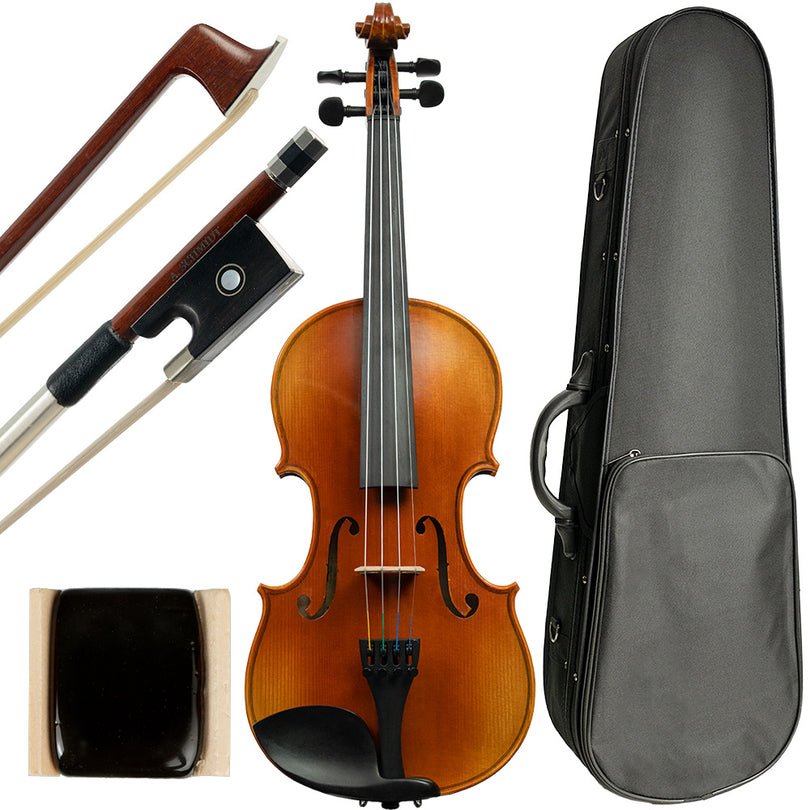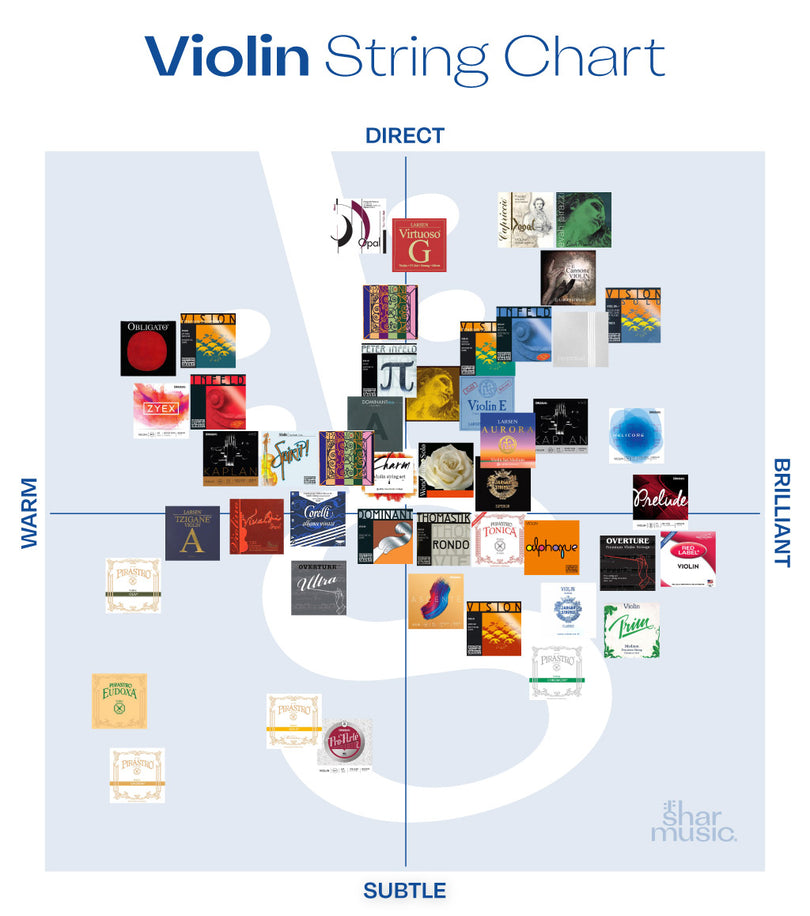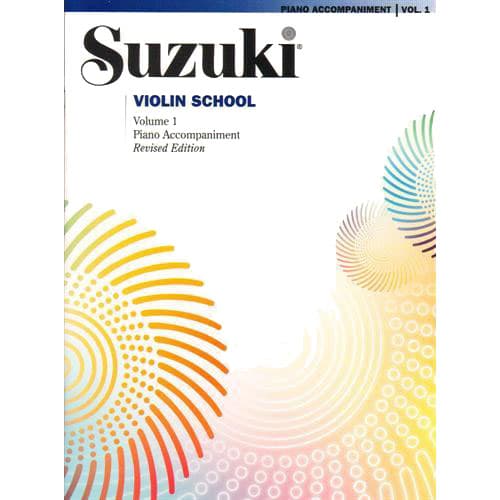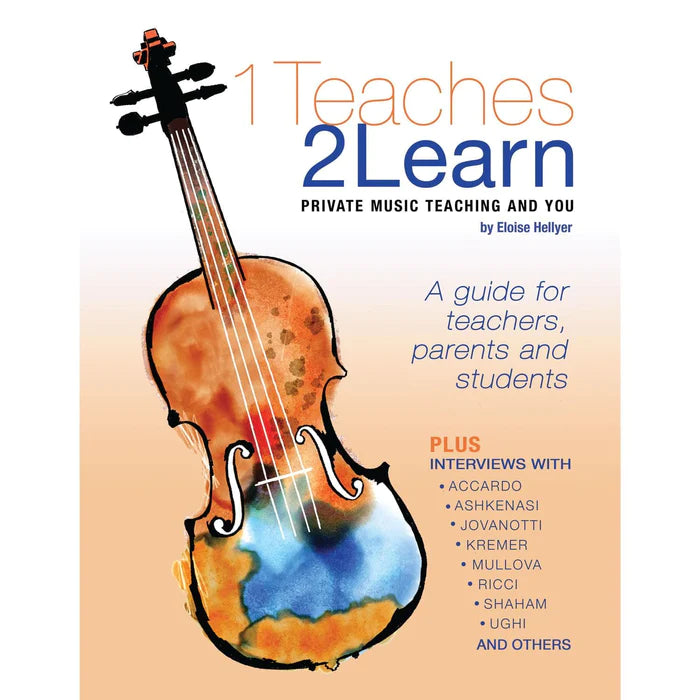Bach’s Solo String Works – Comparing Editions and Making the Right Choice
Johann Sebastian Bach’s Sonatas and Partitas for Solo Violin (BWV 1001–1006) and Six Cello Suites (BWV 1007–1012) are foundational pillars of Western classical training. Every string player eventually crosses paths with these masterpieces. Because of their enduring popularity and Bach’s towering legacy, countless editions have been published – each with its own editorial approach. In this guide, we’ll dive into the key differences between major editions, discuss scholarly vs. pedagogical approaches, and explore how historical performance practice influences modern editions. By the end, you’ll know which editions are trusted by professionals (and competitions) and which are best for students, all available at Shar Music, your trusted source for all your string music needs. Find them here.
Key Differences Across Popular Editions
With so many editions in circulation (over 90 editions of the Cello Suites alone since the first print in 1824!), it helps to know how different publishers approach Bach’s text. Here we compare the major editions for Bach’s solo works in terms of editorial philosophy, engraving style, fingerings/bowings, readability, and commentary features:
- Bärenreiter (Urtext) – Bärenreiter editions are celebrated as faithful Urtext editions, aiming to reproduce Bach’s music as authentically as possible. For the Violin Sonatas and Partitas, the Bärenreiter Urtext (edited by Günter Hauswald) is derived from Bach’s autograph manuscript, with virtually no added markings from editors. For the Cello Suites, Bärenreiter offers multiple options: an older edition edited by August Wenzinger, a newer Urtext edited by Andrew Talle, and an expanded edition with many critical notes edited by Schwemer/Woodfull-Harris. All prioritize earliest available manuscripts’ original notation (since no autograph survives).
-
-
These editions are clean and easy to read, with high-quality engraving, spacious layout, and generous page sizes.
-
Fingerings and bowings are generally not provided or kept to a minimum, which encourages players to make their own decisions.
-
Bärenreiter gives you a meticulously researched, uncluttered score – ideal for purists and competition use.
-
-
Henle Verlag (Urtext) – Henle’s editions are another gold standard for Urtext. The Violin Sonatas and Partitas (edited by Klaus Röhnau, with fingering/bowing by Wolfgang Schneiderhan) actually come with two versions of the violin part: one printed with Schneiderhan’s suggested fingerings and bowings, and a second “fairly clean” part with very few markings. Engraving and printing quality are top-notch (clear notation, durable binding, and high-quality paper), making Henle very readable. For the Cello Suites, Henle’s Urtext (edited by Kurt Meier or Martin Rummel in newer prints) similarly presents an authoritative text with minimal editorial interference, often including a detailed preface discussing the source situation.
-
-
Generally, these editions will come with two solo inserts/parts: one without any extraneous markings and one with edited markings.
-
Henle also includes a scholarly preface/foreword and an appendix of critical remarks in multiple languages.
-
Henle is highly respected in professional circles – many performers use Henle for its reliability. This includes use for auditions, juries, and even competitions.
-
Like Bärenreiter, large page sizes enhance note-taking abilities and ease of performing.
-
-
International Music Company (IMC) – IMC offers some of the most popular edited editions, especially for students and practical use. For violinists, the Ivan Galamian edition of the Sonatas and Partitas (IMC) is a staple. Edited by famed pedagogue Ivan Galamian, this edition is valued for its insightful fingerings and bowings, and it even includes a facsimile of Bach’s autograph manuscript of the violin works. For the lucky violists – who lovingly have access to transcriptions for both the violin and cello pieces - IMC also carries numerous other editions of Bach’s Sonatas and Partitas carried by Shar Music:
-
-
Six Sonatas and Partitas, edited by Joseph Hellmesberger
-
Six Sonatas and Partitas, edited by Joseph Joachim & Andreas Moser
-
This edition is printed with the music on two staves – the top staff is the edited performance version, and the bottom staff reproduces Bach’s original notes as found in the manuscript.
-
-
Six Sonatas and Partitas for Viola, edited by Clemens Meyer & Joseph Vieland
-
For cellists, IMC provides multiple edited options reflecting different schools of cello playing. As well, IMC provides transcriptions for viola and bass.
-
- Six Suites, edited by Hugo Becker (German)
- Six Suites, edited by Pierre Fournier (French)
- Six Suites, edited by Edmund Kurtz (Russian)
- Six Suites for Viola, edited by Leonard Davis
- Six Suites for Viola, edited by Milton Katims
- Six Suites for Bass, edited by Mark Bernat
IMC editions are a practical performing edition and one of the best-selling series of sheet music worldwide.
-
-
The engraving in IMC editions is generally clean and of medium size font; IMC’s printings are known for being practical and gig-friendly, though not as luxurious in paper quality as Henle or Peters.
-
IMC editions rarely include lengthy commentary, but often there’s a brief preface.
-
They are widely used in teaching studios for their simplicity and clarity.
-
-
Edition Peters – Edition Peters has a long history with Bach’s music. Many mid-20th-century players (including Pablo Casals) used Peters editions, which were among the first widely distributed “reference” editions. For the Violin Sonatas and Partitas, Peters Urtext edition, edited by Max Rostal, has quickly become a cornerstone of many violinist’s libraries. This edition contains the full set of sonatas and partitas, accompanied by the urtext, and extensive editor’s notes, covering musical and stylistic analyses, historical background, and editorial remarks. For cellists, the Six Suites, edited by Hugo Becker, fills a similar niche. Again, violists enjoy editions for both the violin and cello suites, each transcribed and edited by Simon Rowland-Jones. His viola editions are known for including various options for problematic movements – for example, he presents Suite No.5 with the original scordatura tuning and an option for normal tuning, and Suite No.6 with options for 4-string or a 5-string viola setup. This thoroughness has made the Rowland-Jones editions a favorite among violists tackling Bach. Finally, Shar carries the first three suites arranged for double bass by H. Samuel Stirling.
-
Engraving-wise, Peters is very clear and easy on the eyes, similar to Henle in quality.
-
-
-
Peters also generally include a critical commentary and an introductory text (in English and German).
-
Peters editions tend to strike a balance: they are reliable, well-engraved, and slightly interpretative in offering practical alternatives.
-
They are a solid choice for serious students and performers alike, at a more affordable price than Henle or Bärenreiter Urtext editions.
-
- G. Schirmer (Schirmer’s Library) – Schirmer editions have been around for over a century and are often chosen for their affordability and availability. For violinists, the Violin Sonatas and Partitas, edited by Eduard Herrmann provides ample fingerings and some bowing suggestions. Players have noted that the quality of a Schirmer edition depends on the editor – in this case Herrmann was a respected violinist of his era, but his editorial choices may lean toward a more Romantic interpretation (for instance, adding phrasing slurs or dynamics not in Bach’s manuscript). For cellists, the Six Suites, edited by Fritz Gaillard, similarly contains lots of performance notes and adds dynamic markings and expressive indications to help students shape phrases – something purists might avoid, since Bach’s solo string works have no dynamics written in the score. Finally, for violists, Schirmer accommodates the Six Suites for Viola, “adapted, revised, and fingered” by Louis Svečenski.
-
-
Schirmer’s Library editions are inexpensive, no-frills editions that many students pick up as their first copy.
-
Schirmer’s engraving is decent though a bit dated – smaller staff size and tight spacing in places.
-
Schirmer’s Library offers accessible editions into major/standard repertoire works.
-
-
Continental Edition – This edition of Bach’s Six Suites requires a special highlight. The great cellist Pablo Casals was responsible for bringing the Cello Suites into the standard repertoire with his legendary early 20th-century performances. While Casals never published a formal annotated edition in his lifetime, his students Madeleine Foley and David Soyer transcribed Casals’ teachings and musings into a printed edition, published by Shar Music’s founder and CEO, Charles Avsharian, found exclusively here at Shar Music. It’s an interpretive treasure – full of Casals’ own phrasing, bowing, and expression advice as remembered by his disciples.
-
Major Alternative Editions – Over the years, numerous notables have left their mark by editing Bach’s solos, often bringing a unique interpretive lens. These editions can be fascinating for study or as an “alternate take” on Bach. A few worth mentioning:
-
-
Schott – Schott is a German publisher with an important edition of the Sonatas and Partitas by the great Polish-Mexican violinist Henryk Szeryng. Szeryng’s bowings and fingerings are very thoughtfully considered, often aligned with a rich musical line.
-
The printing by Schott is high-quality, and players praise its sturdy binding that lays flat on the stand.
-
Carl Fischer – This historic American publisher offers a new edition of the Sonatas and Partitas, edited by Rachel Barton Pine, and has quickly gained attention for its historically-informed approach. Barton Pine is a leading Bach-interpreter of our time, and her edition is unique in that it is explicitly designed to be used with either a modern or Baroque bow. Essentially, Barton Pine’s edition blends scholarly research with practical, playable advice – a fantastic bridge between Urtext and interpretive edition.
-
Bach Revealed - Cellist Selma Gokcen, in collaboration with distinguished American harpsichordist and Bach scholar Kenneth Cooper, has created in Bach Revealed a three-volume study of all six Cello Suites (find Book 1 here, Book 2 here, and Book 3 here), featuring two-part playing editions for the very first time. These versions are designed to assist professional cellists, students and teachers in their study of these Suites. This edition consists of musical reductions, mostly in two voices, which make explicit Bach’s complex harmonies by setting out their structure, without losing any of the originals' spirit and beauty. The reductions allow players to explore the layers of musical texture and reveal Bach’s counterpoint, chordal elaboration and ornamentation of the melodic line. They provide the implied bass line, the essential melodic line, opportunities for ornamentation and the essential rhythmic character of the dance movements. This edition is also available for viola (find Book 1 here, Book 2 here, and Book 3 here).
-
As you can see, each edition – be it Urtext or edited – has its own flavor. The good news is Shar Music stocks all the major editions (Bärenreiter, Henle, IMC, Peters, Schirmer, etc., as well as specialty editions like Szeryng’s or Barton Pine’s). This means you can compare and even own more than one edition; many serious musicians do keep an Urtext for reference and an edited version for ideas.
But just how should you go about choosing with all of these editions? When choosing a Bach edition, one fundamental question is: Urtext or edited? These represent two different approaches:
-
Urtext (Scholarly Edition) – “Urtext” means “original text.” An urtext edition strives to reproduce only what Bach himself wrote, based on the best available sources, with no interpretive additions: the goal is authenticity and scholarship. In Urtext editions of the Sonatas and Partitas or Cello Suites, you’ll usually see Bach’s notes, rhythms, and slurs as found in the manuscript (or copies), with possibly some footnotes or small ossia notes indicating variants from other sources. What you won’t see are modern fingerings, bowing patterns, dynamics, or expressive markings – those are left blank for you to decide. For example, the new Bärenreiter Urtext of the Cello Suites presents a performance score with no bowings or fingerings at all; the Henle Urtext for violin provides a completely clean version alongside the edited one. Urtexts often come with scholarly commentary, introductions discussing sources, and critical notes explaining editorial decisions. These editions are favored by professionals, competition players, and anyone aiming for a historically accurate interpretation. Judges and adjudicators generally trust Urtext editions because they know the performer isn’t following another player’s editorial quirks – they’re starting from the composer’s text. The downside for some is that Urtext editions can be challenging for less experienced players – a blank slate can be intimidating if you’re not sure how to phrase or finger a certain passage. But in terms of fidelity, Urtext is the gold standard.
-
Edited (Interpretive/Pedagogical Edition) – An edited edition includes modifications by an editor (usually a renowned artist or teacher) to guide the performer. This can include added fingerings, bowing patterns, phrase markings, dynamics, articulations, and even tempo suggestions. Generally, none of these interpretive markings are in composer’s original, of course – they reflect the editor’s view of how to best play the music. Edited editions are incredibly useful as learning tools. For instance, a student tackling the Bach Chaconne for the first time might feel overwhelmed by the multiple voices and chords; an edited edition like Galamian’s will suggest which string to play each note on, how to break chords, and where to shift positions – essentially providing a roadmap. Pedagogical editions often also fill in articulation where Bach might have left things ambiguous. However, it’s important to remember that these are opinions, not gospel. Early 20th-century editors, in particular, sometimes imposed a very Romantic interpretation on Bach’s music – using long legato slurs, added crescendos and decrescendos, and expressive fingerings that produce slides. Such edits can conflict with modern, historically-informed taste (Bach’s scores had no dynamics or expressive markings written, and Baroque style favors shorter bow phrases). Most students and teachers use an edited edition at some stage because it’s like having a teacher’s advice on the page. In fact, some editions, like the Joachim/Moser violin edition, were explicitly pedagogical, providing both the original and the edited version together for study.
So which should you choose? It depends on your goals and level. For professional performance, auditions, or competitions, an Urtext edition is generally preferred to demonstrate that you’re referencing Bach’s original text as closely as possible. On the other hand, for learning and everyday practice, there’s no harm in using a quality, edited edition – especially one by a respected musician – to benefit from their expertise. Many players actually use both: practice with an edited version to get ideas but double-check everything against an Urtext or facsimile to ensure they aren’t blindly following an editor where Bach wrote something else. Ultimately, the ideal is to develop your own interpretation; a good edition should either give you a clean canvas (Urtext) or wise guidance (edited) toward that goal.
Thankfully, you don’t have to pick just one edition and stick with it forever. It’s common to own multiple editions over time. And as your Bach journey progresses, you might shift from leaning on edited suggestions to making your own choices. Whichever route you take, Shar Music has you covered with both Urtext editions and the best edited editions – so you can compare and find what works for you.
At the end of the day, the most important thing is engaging with Bach’s sublime music. The right edition is the one that helps you connect with that music most directly. Perhaps you’ll start with a popular edited copy to build confidence, and later reward yourself with a beautiful Urtext volume as you deepen your interpretation. Perhaps as a teacher you’ll keep multiple editions on your shelf to show students how interpretations can vary. There’s a special joy in finding markings on a score that resonate with you – be it a clever fingering that makes a tricky passage sing, or the absence of any markings inviting your own creativity.
Explore Shar Music’s collection of Bach editions and you’ll find the perfect match for your journey. Whether you seek the pure scholarly text or the guidance of a legendary virtuoso, Shar Music is your one-stop source. With the right edition in hand, you can focus on what matters most – making music come alive.
Why Shar Music? Shar has been a trusted guide for generations of musicians. Shar Music offers competitive pricing (so you can perhaps afford that Urtext edition you’ve been eyeing!), and our customer service can help if you have questions like “Which Bach edition is right for my level?” Indeed, many teachers and performers turn to Shar for advice on editions – for example, which printing has the clearest layout or which version includes the facsimile. Shar Music’s blog (as you’re reading now) and product descriptions aim to give you transparent, expert information so you can make an informed purchase. Plus, with Shar Music’s easy online ordering and fast shipping, you can get your hands on that edition quickly and start exploring Bach’s music without delay.
Find all of these editions here!
Happy practicing, and enjoy the endless rewards of Bach’s Sonatas, Partitas, and Suites!









